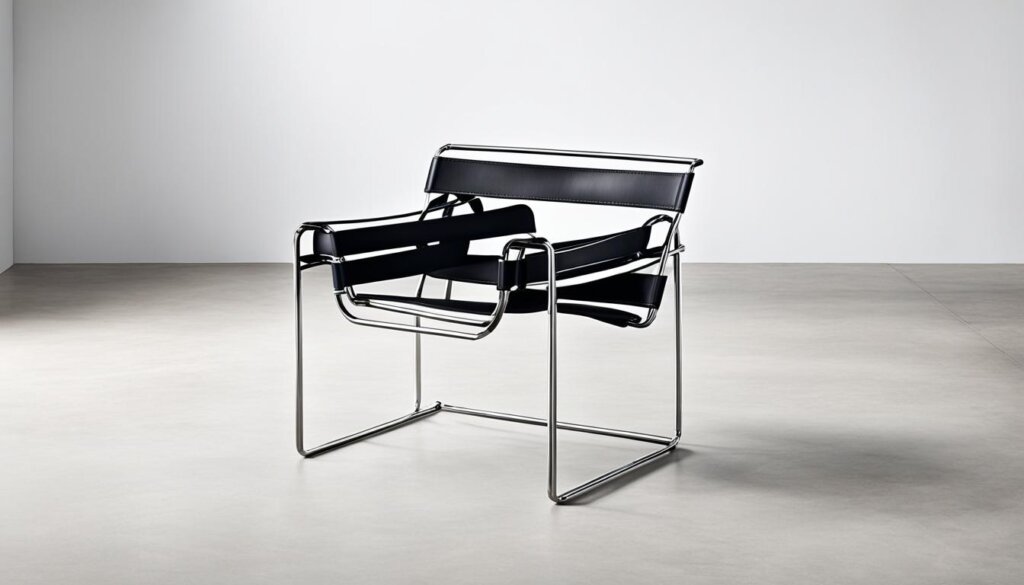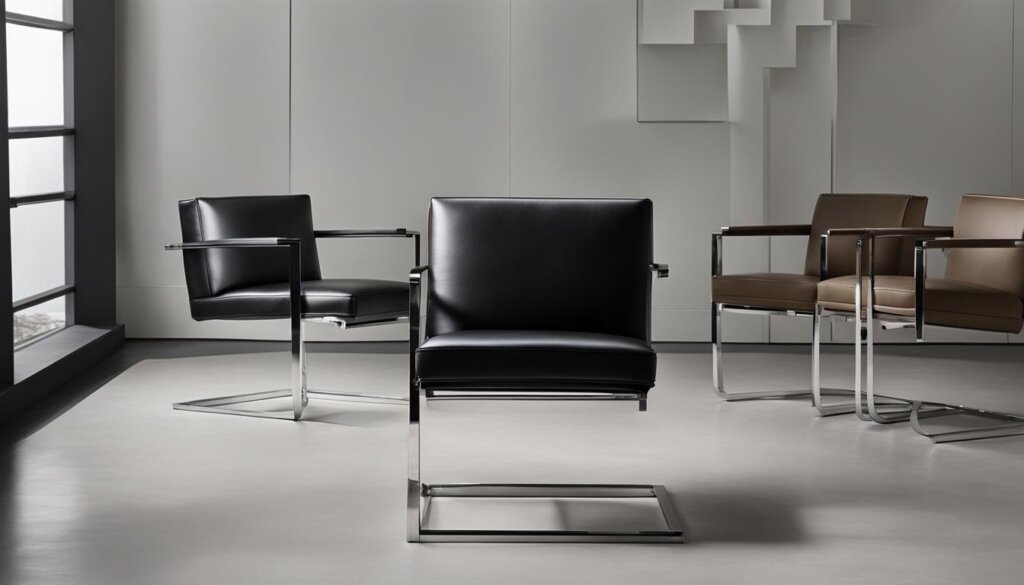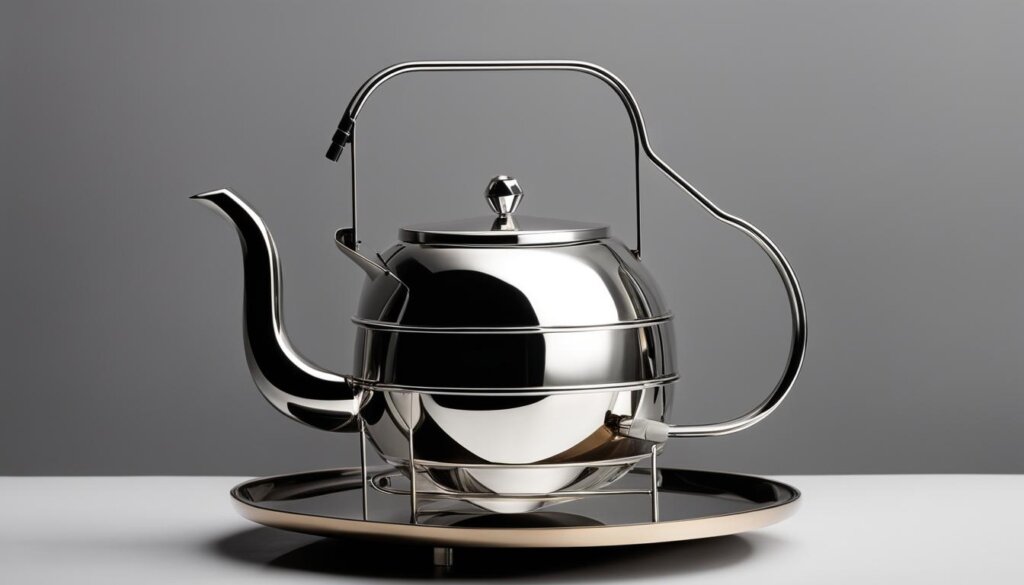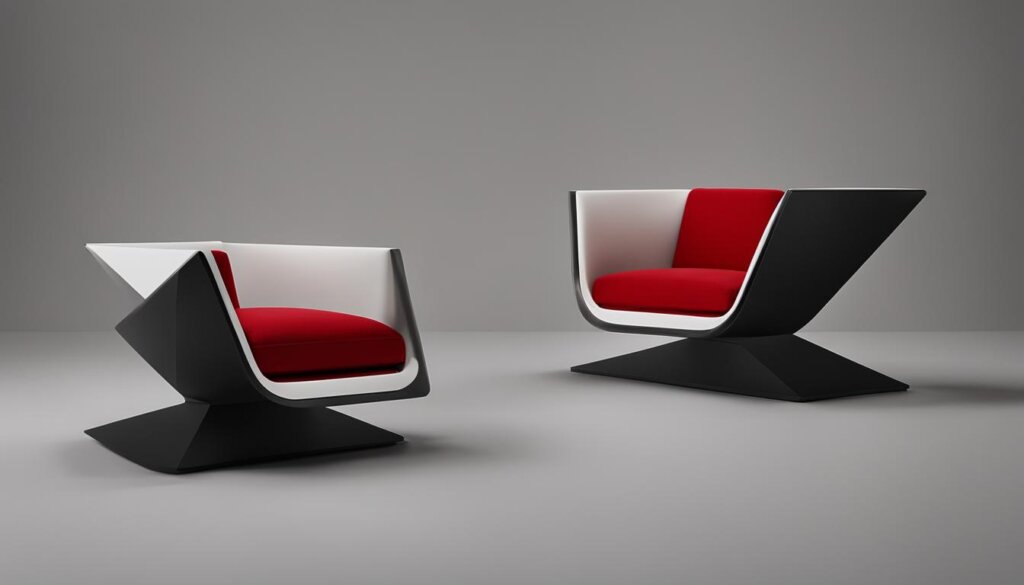Bauhaus Furniture: Iconic Designs & Style
Welcome to our article on Bauhaus furniture! If you’re a fan of modernist furniture and mid-century modern design, then you’re in for a treat. Bauhaus furniture is renowned for its minimalist design, functionalism, and industrial aesthetics. It has created a lasting impact on the world of design, with its timeless classics and iconic pieces that continue to inspire and influence designers today.
At Bauhaus, affordability was a key consideration. The designers aimed to make their furniture accessible to the mass public, without compromising on quality or style. Through their innovative and forward-thinking approach, they created furniture that was not only aesthetically pleasing but also affordable for everyday use.
Some of the most notable designers associated with Bauhaus furniture include Marcel Breuer, Mies van der Rohe, Josef Hartwig, Marianne Brandt, and Walter Gropius, to name a few. These talented individuals pushed the boundaries of design and created pieces that have become true icons of the movement.
In the upcoming sections of this article, we will delve into some of the most iconic pieces of Bauhaus furniture, exploring their unique features, design philosophies, and the talented designers behind them. Get ready to be inspired by the exceptional craftsmanship and ingenuity of Bauhaus furniture!
Stay tuned as we dive deeper into the world of Bauhaus furniture and uncover the stories behind these remarkable pieces. From Marcel Breuer’s iconic Wassily Chair to Josef Hartwig’s revolutionary Bauhaus Chess Set, there is so much to discover and appreciate about this influential design movement.
Marcel Breuer’s Wassily Chair
The Wassily Chair, designed by Marcel Breuer between 1925-1926, is one of the most iconic pieces of Bauhaus furniture. Inspired by his bicycle, Breuer used tubular steel to create a sleek and minimalist design. The chair features a canvas seat, back, and arms, reducing the traditional club chair to its basic elements. It was named after the Russian painter Wassily Kandinsky, who praised the design.
With its innovative use of materials and minimalist aesthetic, the Wassily Chair embodies the principles of the Bauhaus movement. The tubular steel frame creates a sense of lightness and allows for a visually striking composition. The canvas upholstery not only adds comfort but also contributes to the chair’s clean and modern look.
Marcel Breuer’s Wassily Chair is a testament to the Bauhaus philosophy of merging art with functionality. Its timeless design continues to inspire contemporary furniture makers and remains an iconic symbol of modernist design.
Key Features of the Wassily Chair:
- Iconic Bauhaus Furniture
- Tubular Steel Frame
- Minimalist Design
- Canvas Upholstery
Whether placed in a living room, office, or gallery space, the Wassily Chair adds a touch of sophistication and artistic flair. Its clean lines and bold presence make it a focal point of any interior. The chair’s enduring appeal lies in its ability to seamlessly blend with various design styles, from mid-century modern to contemporary.
To experience the iconic design of the Wassily Chair, envision yourself sitting in this timeless piece of furniture, appreciating its simplicity and modernist charm.

Explore the legacy of Marcel Breuer and his iconic Wassily Chair, a true masterpiece of minimalist design. Stay tuned for the next section, where we delve into the remarkable Bauhaus Chess Set designed by Josef Hartwig.
Josef Hartwig’s Bauhaus Chess Set
When it comes to the Bauhaus movement, the focus on minimal design and basic function extends beyond furniture. Josef Hartwig’s Bauhaus Chess Set is a testament to the Bauhaus’ commitment to modernizing every aspect of design, including games.
Created between 1923 and 1924, the Bauhaus Chess Set designed by Josef Hartwig features a strikingly minimalistic design. With clean lines, circles, and squares, Hartwig reduced the chess pieces to their basic movement functions, stripping away any unnecessary ornamentation.
The innovative design of the chess pieces is not the only departure from convention. Hartwig also eliminated the religious and monarchical symbols traditionally seen in chess sets, further emphasizing the Bauhaus’ avant-garde approach to design.
The Bauhaus Chess Set perfectly exemplifies the Bauhaus’ core principles of simplicity and functionality. By modernizing the game of chess, Hartwig’s design bridges the gap between art and utility, making it a timeless piece of the Bauhaus legacy.

For more iconic designs and influential pieces from the Bauhaus movement, continue reading our article.
Ludwig Mies van der Rohe’s Brno Chair
The Brno Chair, designed by Ludwig Mies van der Rohe between 1929 and 1930, is a remarkable piece that embodies the essence of Bauhaus design. This cantilever-style chair deviates from the traditional four-legged structure, opting for a single C-shaped bar for support. The result is a sleek, minimalist design that remains an iconic example of Bauhaus furniture.
With its clean lines and minimalistic form, the Brno Chair showcases Mies van der Rohe’s artistic vision and commitment to simplicity. The chair’s smooth curves and absence of unnecessary ornamentation contribute to its timeless appeal, making it a highly sought-after piece among design enthusiasts.
The Brno Chair perfectly exemplifies the Bauhaus principle of reducing objects to their basic elements. Its cantilever-style construction challenges conventional design norms and creates a sense of visual lightness. By eliminating unnecessary components, Mies van der Rohe highlights the beauty of function and form.
Whether used as a dining chair, an office chair, or a statement piece in a modern living room, the Brno Chair effortlessly integrates into various interior styles. Its minimalist design allows it to harmonize with both contemporary and classic surroundings.
To fully appreciate the impact of the Brno Chair, one must acknowledge the role of Ludwig Mies van der Rohe in shaping modern architecture and design. As a highly influential figure of the Bauhaus movement, Mies van der Rohe emphasized the importance of simplicity and the pursuit of perfection in design.

Features of the Brno Chair:
- Cantilever-style design with a single C-shaped bar for support
- Minimalist aesthetic with clean lines and no unnecessary ornamentation
- Durable and high-quality construction
- Versatile and suitable for various interior styles
- Emblematic of the Bauhaus philosophy of functionalism and minimalism
The Brno Chair remains an iconic piece of furniture that exemplifies the brilliance of Ludwig Mies van der Rohe and the timeless appeal of Bauhaus design. Its cantilever-style construction and minimalist design make it a statement piece in any space while offering exceptional comfort and functionality.
Marianne Brandt’s Tea Infuser
In 1924, Marianne Brandt, a talented German artist, created a remarkable tea infuser that showcased her innovative approach to design. This geometric tea infuser features a sleek and minimalist metal construction, setting it apart from conventional teapots. The infuser’s silver hemisphere body is supported by a crossbar structure, ensuring optimal steeping and easy pouring. To enhance functionality, a D-shaped ebony handle is positioned high up, providing a comfortable grip for convenient tea preparation.
Brandt’s tea infuser stands as a testament to her ability to combine aesthetics with practicality. The geometric design and minimalist aesthetic of the infuser exemplify the principles of Bauhaus, a renowned German art school that emphasized simplicity and functionality in design. By stripping away unnecessary ornamentation, Brandt created a tea-infusing tool that is not only visually pleasing but also highly functional.
With its clean lines and precise geometric form, Marianne Brandt’s tea infuser adds a touch of elegance to any tea-drinking experience. Whether you appreciate geometric design, minimalist aesthetics, or simply enjoy a good cup of tea, this metal tea infuser is a must-have addition to your collection.

Experience the perfect blend of minimalist design and functionality with Marianne Brandt’s geometric metal tea infuser.
Peter Keler’s Baby Cradle
In 1923, Peter Keler, a talented designer at the Bauhaus, presented an innovative and visually stunning creation: the Baby Cradle. Inspired by Wassily Kandinsky’s book on color theory, Keler incorporated geometric design, primary colors, and simple shapes to craft a truly remarkable piece.
The Baby Cradle perfectly embodies the Bauhaus’ core principles of balance, harmony, and proportions. Keler’s creative use of triangles, rectangles, and vibrant primary colors results in a cradle that is both visually striking and functional.
By employing primary colors, Keler creates a sense of vibrancy and energy, while the geometric shapes foster a feeling of order and stability. The combination of these elements results in a design that appeals to both the visual senses and the principles of child development.
This iconic creation showcases the Bauhaus’ commitment to pushing artistic boundaries and reimagining everyday objects. Keler’s Baby Cradle is a testament to the power of design to transcend traditional concepts and create something truly extraordinary.
If you are interested in seeing the Baby Cradle, take a look at the image below:

Inspiration from Kandinsky
Keler drew inspiration from Wassily Kandinsky’s theories on color and form, which emphasized the emotional impact of primary colors and simple shapes. He skillfully applied these principles to the design of the Baby Cradle, resulting in a visually captivating and stimulating piece.
A Touch of Elegance and Creativity
Through Keler’s innovative use of geometric design and primary colors, the Baby Cradle becomes both an artistic statement and a functional object. Its clean lines and striking color palette make it a standout piece in any nursery.
Perfect for Modern Spaces
The Baby Cradle’s geometric design and bold primary colors make it a perfect fit for contemporary interiors. It adds a touch of modernism and creativity to any space, while also providing a comfortable and secure environment for babies.
In the next section, we will explore another remarkable piece of Bauhaus furniture: Walter Gropius’ Door Knob. Stay tuned!
Walter Gropius’ Door Knob
When we think of the Bauhaus movement, we often visualize iconic furniture pieces like chairs and tables. However, Walter Gropius, the founder of the Bauhaus, also delved into the realm of functional and visually appealing door hardware. In 1923, Gropius designed a modernist door knob that perfectly embodied the industrial style and minimalist design principles of the Bauhaus.
Made from nickel-plated brass, this industrial-style door knob features a cylindrical grip and a cranked, squared stem. Its sleek and streamlined form showcases Gropius’ commitment to combining form and function in a visually appealing way. The door knob’s simplicity and industrial aesthetic make it a timeless and iconic piece of design.
The minimalist design of the door knob allows it to seamlessly blend into various architectural styles, from modernist to contemporary. Its clean lines and geometric shapes make it a versatile choice for any interior. Whether it’s installed in a residential or commercial space, this Bauhaus-inspired door knob adds a touch of sophistication and elegance.
The industrial style of the door knob not only pays homage to the Bauhaus movement but also serves as a reminder of the era’s innovation and forward-thinking mindset. It represents a departure from the ornate and elaborate door handles of the past, embracing simplicity and functionality instead.
Just like other Bauhaus designs, Gropius’ door knob exemplifies the movement’s commitment to creating objects that are both aesthetically pleasing and practical. Its timeless appeal and versatile design continue to inspire contemporary designers and homeowners alike.
By fusing industrial style with minimalist design, Walter Gropius’ door knob showcases the essence of the Bauhaus movement. Its clean lines, geometric shapes, and attention to detail reflect the principles that continue to influence design today.
Josef Albers’ Nesting Tables
When it comes to space-saving furniture, Josef Albers’ Nesting Tables are a true standout. Created in 1926, these tables were designed with both functionality and aesthetic appeal in mind. Made from solid oak and lacquered acrylic glass, they feature a bold and eye-catching color scheme of blue, red, yellow, and white. Albers’ geometric design principles shine through in the clean lines and precise angles of these tables.
What makes these nesting tables particularly special is their space-saving concept. With three tables of varying sizes that neatly fit into one another, they provide flexibility and versatility in any living space. When not in use, they can be easily stacked and tucked away, taking up minimal space. This clever design is a perfect example of the Bauhaus philosophy of effective and efficient use of materials.
Aside from their practicality, Albers’ Nesting Tables also make a bold visual statement. The vibrant colors and geometric shapes add a touch of modernity and playfulness to any room. Whether used as a coffee table or as individual side tables, they are sure to catch the eye and become a conversation piece.
In summary, Josef Albers’ Nesting Tables are a prime example of the Bauhaus principles in action. Their space-saving design, geometric aesthetic, and use of quality materials make them a functional and visually pleasing addition to any home. These tables embody the Bauhaus legacy, showcasing the timeless appeal of its innovative and influential designs.

